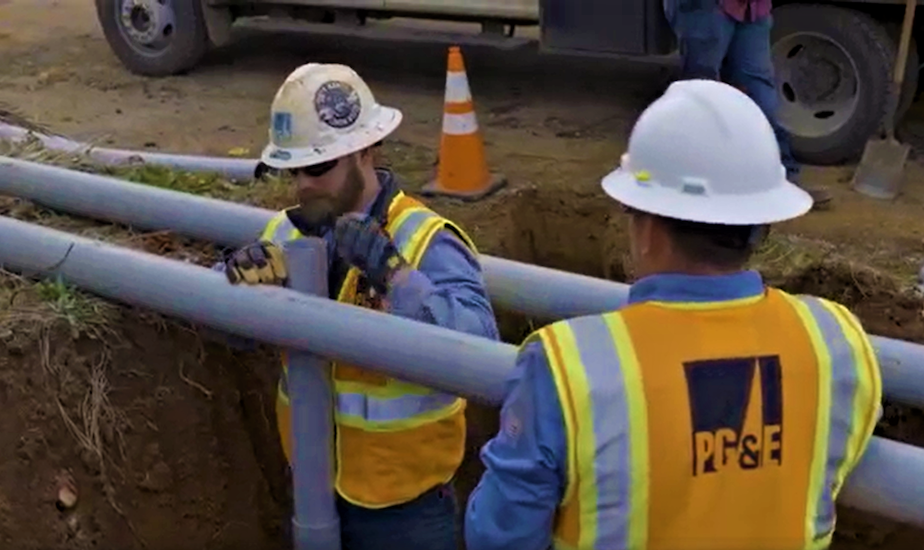Now through the end of 2021, we won’t be cutting off customers’ energy supply because they’re behind on their bills. All PG&E residential and commercial customers with overdue balances of 60 days or more will be enrolled in new extended payment arrangements. The Pacific Gas and Electric Company (PG&E) stated on Thursday that they will not be resuming service disconnections for the remainder of the year as part of their ongoing comprehensive efforts to assist customers financially impacted by the COVID-19 outbreak. The California Public Utilities Commission (CPUC) imposed a moratorium on electricity service disconnections in March 2020, and while that moratorium officially ends today, disconnections will not restart in 2021.
All residential and commercial customers with overdue amounts of 60 days or more will be automatically enrolled in PG&E’s new extended payment arrangements. Additionally, we are keeping a close eye on the progress of the California Arrearage Payment Program (CAPP), which is a part of the 2021-22 California State Budget. Until the CAPP programme is finalised, PG&E will not recommence disconnection procedures for residential and business customers who are qualified for the CAPP programme. “As the pandemic’s effects grow and the statewide disconnection moratorium ends today, we have been working with local, state, and utility authorities to ensure that our clients in need have access to crucial assistance. For the time being, PG&E has decided not to begin cutting off customers’ power for failure to pay “Executive Vice President and Chief Customer Officer at PG&E Marlene Santos stated.
Customers of California’s energy utilities will be able to get aid paying off their overdue energy bills thanks to the recently launched CAPP programme. The CAPP programme, run by the State of California’s Department of Community Services and Development (CSD), allots $1 billion in federal American Rescue Plan Act cash to settle energy bills that California residents have accrued from March 4, 2020, to June 15, 2021. In order to qualify for financial aid through CAPP, utility consumers do not need to fill out an application. If a customer’s account is eligible (defined as being 60 days or more overdue on utility payments), a credit will be given to all or part of the customer’s bill, based on the amount of money available and the total amount of money needed to cover all utility customers’ bills.
Months have passed with PG&E and CSD working closely together on the finer points of the program’s rollout. In the first quarter of 2022, PG&E expects to apply CAPP financing directly to the accounts of qualified consumers. More than 450,000 residential and small business customers were automatically enrolled in PG&E’s new COVID-19 payment plan programme this month to coincide with the end of the moratorium today. Eligible clients whose payments are more than 60 days late will now be enrolled in the new programme automatically. In order to prevent service interruptions, eligible customers will be automatically registered on a rolling basis from now until September 2022. All customers who are registered in the new longer payment plans will be eligible for CAPP subsidies.
Methods via which consumers can reduce their energy costs
Customers who are having financial difficulties are strongly encouraged to investigate the following assistance options. Customers who qualify for the CAPP funding extension can also participate in the following initiatives without jeopardising their financing:
The federal Low-Income Home Energy Assistance Program (LIHEAP) provides up to $1,000 per household to help with energy bills. Customers who qualify for the REACH Program’s one-time financial aid for overdue energy bills. If you are more than 90 days past due on your utility bill, but you are enrolled in either the California Alternate Rates for Energy Program (CARE) or the Family Electric Rate Assistance (FERA) Program, you may be eligible for up to $8,000 in unpaid balance forgiveness through the Arrearage Management Plan (AMP).
The California COVID-19 Rent Relief Act and PG&E’s Medical Baseline Program are only two examples of external programmes that provide assistance to low-income households with rent and utility bills. You may either be a landlord or a tenant to apply. PG&E is available to assist customers as they make this transition and is dedicated to doing so.
In what ways may I avoid having my service disconnected?
If you are a residential customer of an investor-owned utility (such as Eversource, National Grid, Unitil, Liberty Utilities, or Berkshire Gas) and your utility service is essential to keeping your house warm between November 15 and March 15, you are protected from having your service disconnected. Without prior approval from the Department of Public Utilities, your electric or gas service may be disconnected at any other time only if one of the following conditions applies and you are facing financial hardship:
The following apply to you: you or a family member is terminally sick; you have a newborn younger than 12 months old; all people in the home are 65 or older, and there is a small kid present. Utility services can be kept on without risk of disconnection by enrolling in a payment plan. Residential customers who are having trouble making their utility payments, who are behind on their payments, or who would like to make their payments on a more consistent basis are encouraged to contact their electric or gas utility company to inquire about payment plans and any applicable payment assistance programmes. Investor-owned electric and gas utilities cannot terminate payment arrangements with residential customers who are current on their payments.
In the event that you are connected to a municipal utility, you may or may not be experiencing service disconnection due to past-due payments. A municipal utility’s shut-off policy and payment assistance programmes are matters that should be discussed directly with the company if you are a residential customer.

